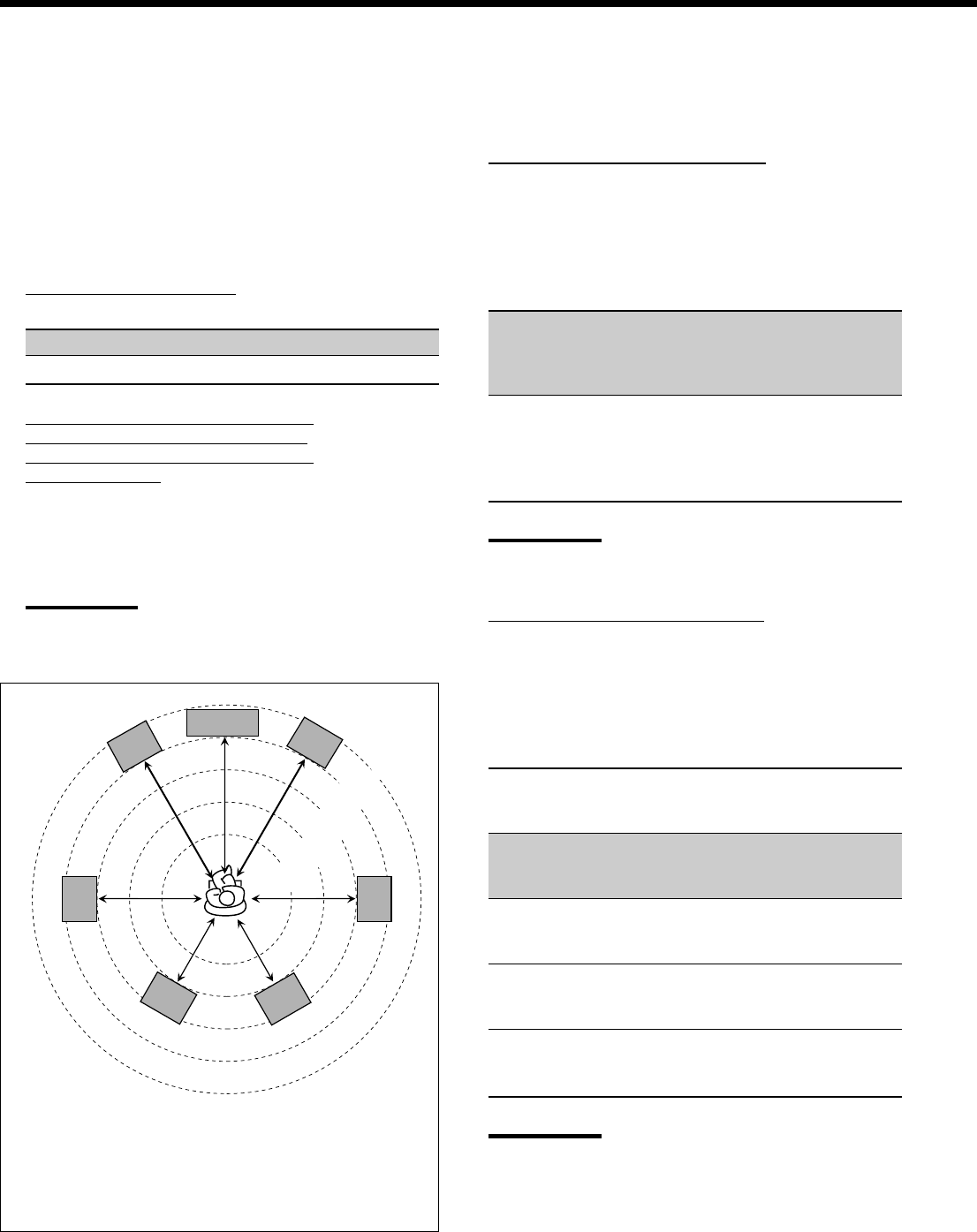
24
Setting the speaker distance
The distance from your listening point to the speakers is another
important element to obtain the best possible sound of the Surround
and DSP modes. Set the distance from your listening point to the
speakers.
By referring to the speaker distance setting, this unit automatically
sets the delay time of the sound through each speaker so that sounds
through all the speakers can reach you at the same time.
• If you have used Quick Speaker Setup on page 21, this setting is
not required.
7
Measuring unit—DIST UNIT
Select which measuring unit you use.
DIST UNIT: meter Select to set the distance in meters.
DIST UNIT: feet Select to set the distance in feet.
7
Speaker distance—FRNTL DISTANCE,
FRNTR DISTANCE, CNTR DISTANCE,
SURRL DISTANCE, SURRR DISTANCE,
SBACK DISTANCE
Set the distance from the listening point within the range of
0.3 m (1 ft) to 9.0 m (30 ft), in 0.3 m (1 ft) intervals.
• When shipped from the factory, distance for each speaker is
set to “3.0 m (10 ft).”
Notes:
• You cannot set the speaker distance for the speakers you have
selected “NONE” (see page 23).
• This setting is not valid for the DVD MULTI playback mode.
Ex. In the above case, set the speaker distance as follows:
Front speakers (L/R): 10 ft (3.0 m)
Center speaker (C): 10 ft (3.0 m)
Surround speakers (LS/RS): 9 ft (2.7 m)
Surround back speakers (SB): 8 ft (2.4 m)
Setting the bass sounds
You can adjust subwoofer and bass sounds precisely according to
your preference.
7
Subwoofer output—S WFR OUTPUT
You can select the type of the signal which can be transmitted
through the subwoofer. In other words, you can determine
whether or not the bass elements of the front speaker channels
are transmitted through the subwoofer regardless of the front
speaker size setting (either “SMALL” or “LARGE”).
Select one of the following:
S WFR: LFE Select to emit only the LFE signals (while
playing Dolby Digital or DTS software) or the
bass elements of the “SMALL” front speakers
(while playing any source other than the above).
S WFR: LFE+MAIN
Select to always emit the bass elements of the
front speaker channels (MAIN). While playing
Dolby Digital or DTS software, the bass
element and the LFE signals are both emitted.
Note:
If you have selected “NO” for the subwoofer, this function is not
available.
7
Crossover frequency—CROSS OVER
You can select the crossover frequency for the small speakers
used. The signals below the selected frequency level will be sent
to and be reproduced by the subwoofer (or by “LARGE”
speakers when you have selected “NO” for the subwoofer).
Select one of the crossover frequency levels according to the
size of the small speaker connected.
CROSS OVER: 80Hz
Select when the cone speaker unit built in the speaker is
about 12 cm (4
3
/4 inches).
CROSS OVER: 100Hz
Select when the cone speaker unit built in the speaker is
about 10 cm (3
15
/16 inches).
CROSS OVER: 120Hz
Select when the cone speaker unit built in the speaker is
about 8 cm (3
3
/16 inches).
CROSS OVER: 150Hz
Select when the cone speaker unit built in the speaker is
about 6 cm (2
3
/8 inches).
CROSS OVER: 200Hz
Select when the cone speaker unit built in the speaker is
about 5 cm (2 inches).
Notes:
• If you have selected “LARGE” for all activated speakers (see
page 23), this function is fixed to “OFF.”
• Crossover frequency is not valid for the DVD MULTI playback,
Headphone, and 3D Headphone mode.
2.1 m
(7 ft)
2.4 m
(8 ft)
2.7 m
(9 ft)
3.0 m
(10 ft)
3.3 m
(11 ft)
C
LR
LS RS
SB
SB
(Left)
(Right)
21-26_7040[J] 04.1.21, 15:5424


















